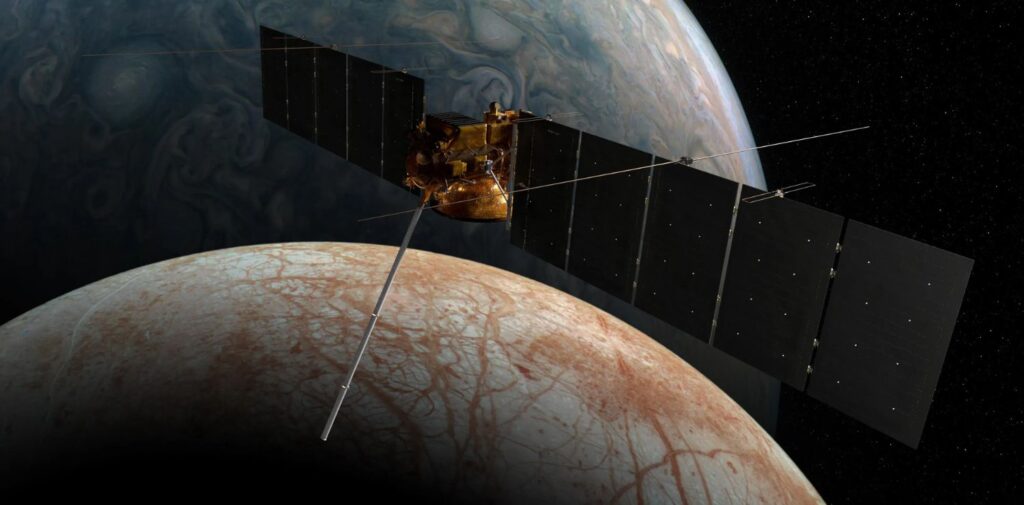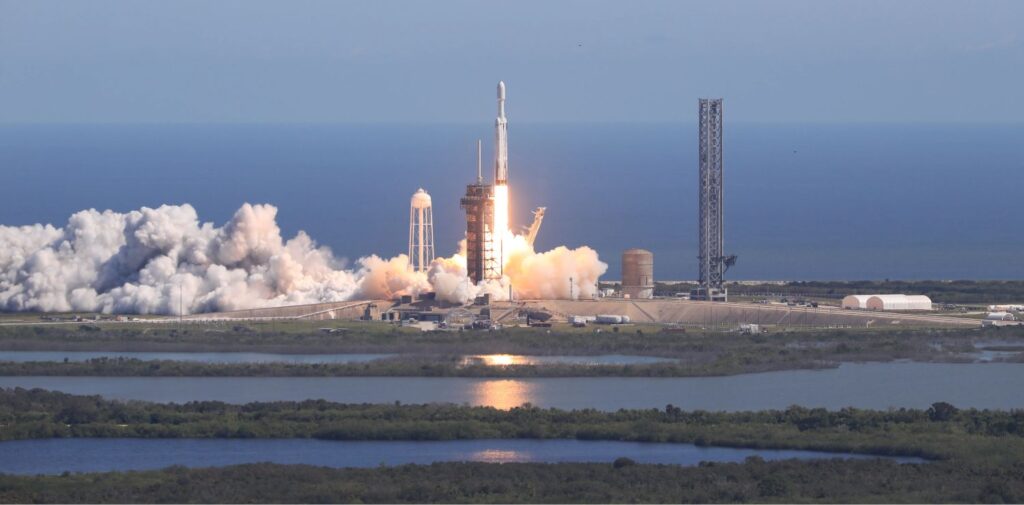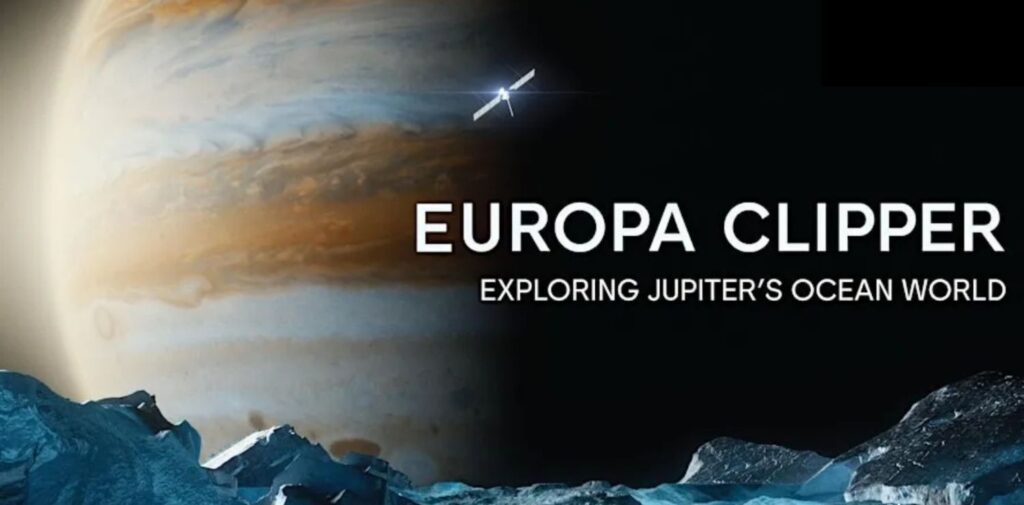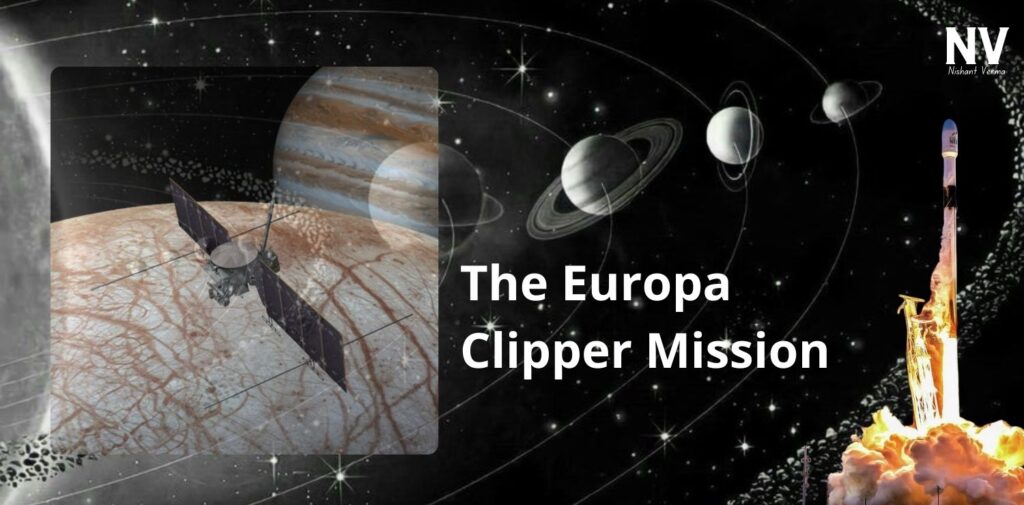The Europa Clipper mission is an ambitious project by NASA aimed at exploring one of the most intriguing moons in our solar system: Europa. Known for its icy crust and potential subsurface ocean, Europa is considered one of the prime candidates in the search for extraterrestrial life. This article provides a comprehensive overview of the Europa Clipper mission, its objectives, scientific instruments, and the significance of its findings.
Introduction to Europa
Europa is one of Jupiter’s largest moons and has fascinated scientists since its discovery in 1610 by Galileo Galilei. With a surface primarily composed of water ice, Europa is believed to harbour a global ocean beneath its icy shell. This ocean could contain more than twice the amount of water found on Earth, making Europa a compelling target for astrobiology.

Mission Overview
Launch and Journey
The Europa Clipper was launched on October 14, 2024, using a SpaceX Falcon Heavy rocket. After launch, the spacecraft will embark on a journey that includes a series of flybys of Jupiter before it arrives at Europa, expected in 2030. The spacecraft is designed to conduct numerous close flybys of Europa, collecting data that will enhance our understanding of this enigmatic moon.
Mission Goals
The primary goals of the Europa Clipper mission are:
- Characterizing the Ice Shell and Ocean: Understanding the thickness of Europa’s ice shell and the depth and salinity of its ocean is critical for assessing its habitability.
- Analyzing Surface Composition: The mission will investigate the composition of Europa’s surface, including potential materials that may have been ejected from the ocean beneath.
- Studying Potential Plumes: Previous observations suggested that Europa may have geyser-like plumes ejecting material into space. The Clipper will search for these plumes and analyze their content.
- Assessing Habitability: The ultimate goal is to assess whether Europa has the conditions suitable for life.

Scientific Instruments
The Europa Clipper is equipped with a suite of scientific instruments designed to achieve its objectives:
- Ice-Penetrating Radar: This instrument will help determine the ice shell’s thickness and identify the underlying ocean’s characteristics.
- Visible and Infrared Mapping Spectrometer (VIMS): VIMS will analyze the surface composition and identify the minerals and chemicals present on Europa’s surface.
- Europa Thermal Emission Imaging System (E-THEMIS): This tool will measure the thermal properties of the surface to provide insights into its composition and geologic activity.
- Mass Spectrometer: This instrument will analyze the composition of Europa’s atmosphere and any plumes detected during flybys.
- Magnetometer: By measuring the magnetic field around Europa, this instrument will help infer the properties of the subsurface ocean.
Power and Communication
The spacecraft is powered by solar panels, which are especially effective at Jupiter’s distance from the Sun due to the advancements in solar technology. Communication with Earth will be conducted through high-gain antennas, allowing for the transmission of large amounts of data collected during the mission.
Significance of the Mission
- Astrobiological Implications: The Europa Clipper mission holds significant implications for astrobiology. By investigating Europa’s ocean and ice shell, scientists hope to uncover clues about the moon’s potential to support life. If life exists in the subsurface ocean, understanding its nature could inform our knowledge of life’s potential beyond Earth.
- Comparisons to Other Missions: Europa Clipper builds on the legacy of previous missions, including the Galileo orbiter, which provided initial evidence of Europa’s ocean. Additionally, the mission’s focus on a celestial body with a subsurface ocean complements ongoing studies of other ocean worlds in our solar system, such as Saturn’s moon Enceladus.
- Technological Advancements: The development of the Europa Clipper has led to advancements in space technology, particularly in the fields of instrumentation and power generation. The mission’s success will pave the way for future explorations of other distant moons and planets, enhancing our capabilities to explore the solar system.

Challenges Ahead
The Europa Clipper mission faces several challenges, including:
- Radiation Environment: Jupiter’s intense radiation belts pose a significant threat to the spacecraft’s electronics. Engineers have designed robust shielding to mitigate this risk.
- Distance Communication: The vast distance from Earth to Jupiter presents challenges in communication. Signals can take over 30 minutes to travel one way, complicating real-time data transmission and command execution.
- Operational Complexity: Conducting numerous flybys and collecting data simultaneously requires precise navigation and timing, making mission operations complex.
Conclusion: Europa Clipper Mission
The Europa Clipper mission represents a significant step forward in our quest to explore the potential for life beyond Earth. By investigating Europa’s icy shell, subsurface ocean, and surface composition, the mission aims to answer fundamental questions about habitability in our solar system. As we await the spacecraft’s arrival at Europa in 2030, the scientific community is filled with anticipation for the discoveries that lie ahead. The findings from Europa Clipper could revolutionize our understanding of life in the universe and inspire future generations of explorers and scientists.




